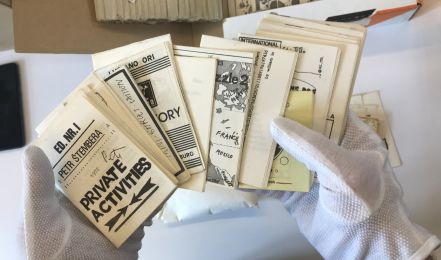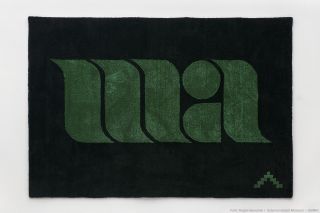‘the 80s’
- « previous
- 1
- 2
- 3
- next »
Artist Archives of the Future
Cooperation with the Andrzej Partum Archives Within the framework of the collaboration “Artist Archives of the Future”, the Andrzej Partum Archive (managed by Muzeum Sztuki) and Artpool staff are conducting comparative research in one another’s respective archives. The Andrzej Partum Archive (1938—2002), named after a prominent artist and theorist of the Polish neo-avantgarde, represents the art network of …
Júliusz Huth
… in Cluj, Romania and at Eötvös Loránd University in Budapest, Hungary. He completed his PhD at the Doctoral School of Philosophy at ELTE in 2024. His research focuses on the history of institutions, exhibitions and visual art-related discourses in the second half of the 20 th century, particularly in Hungary during the 1980s and 1990s. In 2017, he was awarded the Fülep Lajos Prize, and in 2020, he received the Horváth Art Foundation’s Criticism Award. He is a lecturer at the Hungarian …
Kristóf Nagy
Art Historian, Sociologist He studied art history at The Courtauld Institute of Art in London and sociology and anthropology at Central European University (CEU). He submitted his doctoral dissertation at CEU in 2024, where he was awarded the Advanced PhD Award in the same year. He is working on a project at the Research Department of KEMKI focusing on the art of the 1980s. As part of this, he organized the Flowers of Decay conference in 2022 and …
GRÓF Ferenc – GYENES Zsófia: (Dis)organigram – State Gallery Company, 2022
130 x 190 cm, hand-stitched carpet After the Hungarian private sector and retail trade were brought under state ownership between 1948 and 1950, the commercial trade of contemporary artworks also came under state control. In 1952, for the purposes of selling the works of its contemporary artist members, the Art Fund of the Hungarian People’s Republic established the Gallery Company (Képcsarnok Vállalat), with its own exhibition space …
GRÓF Ferenc – GYENES Zsófia: (Dis)organigram – State Art Foundation, 2022
250 x 170 cm, hand-stitched carpet Once the Hungarian art world had been brought under state control in 1948, a large state-owned art company was created whose name was changed several times. Initially it was known as the Fine Art Fund, then—with the merger with the Literary and Music Fund—it was referred to as the Art Fund of the Hungarian People’s Republic (Art Fund, for short). Its main task was to provide an economic basis for the …
- « previous
- 1
- 2
- 3
- next »




